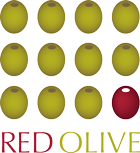The prospect of tackling the Big Data explosion can seem daunting. With so much data available, where do you even start? In this series of blog posts, we’ll look at how advanced analytics can enable you to extract real business value from your data.
What is Big Data?
It’s always best to start with the basics. Most experts define Big Data by Volume, Velocity and Variety, i.e.:
A large amount of data (Volume) updated at high-speed (Velocity) from a wide range of formats and diverse sources (Variety).
With continuous advances in technology and communication systems, Big Data is growing all the time. This data growth is also motivated by increasing demand from businesses. As a result, the scale and speed of analytical goals are becoming more and more ambitious.
Digging into Big Data
A business can analyze their data for useful patterns by following a data mining process. This diagram outlines the development of a sample data mining procedure.
There are two main types of data mining:
Descriptive
The descriptive method doesn’t centre on any one variable, but gives a comprehensive picture of what the data set contains. Using ‘undirected’ data mining techniques, a descriptive model can answer questions like ‘How does the subscriber base segment?’ or ‘What segments is the data telling us are there?’
The descriptive method uses techniques such as factor analysis, cluster analysis and affinity analysis.
Predictive
The predictive method is driven by a specific target variable and uses ‘directed’ data mining techniques. For example a predictive model might be built to assess which web site visitors are likely to become paid subscribers.
Predictive techniques include forecasting, decision trees and regression models.
Forecasting
One example of the forecasting technique is the time series analysis. By studying how information changes over time, a business can forecast future results.
Decision tree
Decision tree analysis is not the most accurate technique, but it’s easier to understand. By visually representing a series of alternate choices, decision trees demonstrate possible outcomes.
Regression model
A regression model uses the relationships between variables from past results to predict future results. This article from The Times uses a simplified regression model to calculate a maximum calorie intake for weight loss.
The descriptive and predictive methods of data mining can work well together. A descriptive model can provide you with insight, on which you can act using specific predictive models.
The Big Data explosion can seem overwhelming, but more information is always an asset. With the use of advanced analytics, you can dig into your wealth of data and extract real business value.
To find out how your business can make better use of Big Data and data mining processes, get in touch with Red Olive via [email protected] or call (+44 1256 83 11 00). We’d love to answer any questions.
Come back to the Red Olive blog soon for the next part of our series, ‘Advanced analytics: Text Mining’.
In the meantime, why not have a look at our previous series on Predictive Analytics?
Predictive Analytics: the first in a series
Predictive Analytics: how it can be used to improve business performance (1)
Predictive Analytics: how it can be used to improve business performance (2)
Predictive Analytics: relationship with strategic planning and forecasting
Industry standard process for carrying out predictive analytics: CRISP-DM
Optimising the approach to predictive analytics: continual improvement, agility and automation







